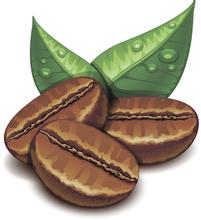Description of G1G2 Flavor of Yejiaxuefei Coffee Bean Variety introduction of Regional treatment method for Manor production
Description of G1G2 Flavor of Yejiaxuefei Coffee Bean Variety introduction of Regional treatment method for Manor production
Japanese beans are mainly beans harvested in the second half of the harvest season, that is, the harvest from December to January, and the beans are harvested at high altitudes. The drying of the first stage is very important. Dry the beans on a thin cloth to avoid fermentation, and then let the coffee and peach blossoms reach the level of dryness such as "raisin", that is, about 25%. When turning coffee peaches, you should pay attention to avoid fleshy flesh. In the second stage, the coffee peach should reach 25% to 12%. In addition to thickening the cloth, it should also be turned frequently during the day and set at noon and at night. Too fast drying will lead to excessive fruit flavor, the taste of raw beans will be unstable, and too slow drying will lead to mildew or other defective flavors. Daily processing is expensive and requires a lot of manpower, and even more careful attention is needed to produce the best quality Japanese beans.
Yejassefi's coffee trees were planted by European monks (a bit like Belgian monks growing wheat to brew beer) and were later transferred to farmers or cooperatives. Yejia Chuefei is actually constructed by surrounding coffee communities or cooperatives, including Edido Idido, Hafusa Harfusa, Hama Hama and Biloya near Fog Valley Misty valley, all washed with water, but there are also a small number of off-product beans engraved with sun to enhance the charming fruit aroma and mellow thickness. These mountain villages are foggy, like spring all year round, with a gentle breeze in summer, cool but not hot, rain but not damp, and no cold damage in winter, giving birth to a unique regional flavor of citrus and flowers. Coffee trees are mostly planted in farmers' own backyard or mixed with other crops in the field, the yield per household is not much, it is a typical rural coffee. Yega Xuefei won the prize beans almost from the above-mentioned coffee villages and communities.
In Ethiopia, after the coffee cherry is harvested, the peel and pulp are immediately exposed to the sun in the bean drying farm until the coffee is dried to 16% moisture, then dried in a dryer to achieve the same moisture content, and then repeatedly rubbed with parchment or sheepskin until the surface mucosa is removed and polished. This is the process of processing sun beans.
Sidamo, Ethiopia, is the best producer of sun-dried beans, producing a lot of memorable sun-tanned coffee. Yega Xuefei is located in a region with rivers in Sidamo Province. The water-washed beans produced are famous all over the world, but what is more expected or surprising is the high-quality sun-dried beans. The micro-climate in small areas affects the quality of Yega Xuefei sun-dried beans. Because of the river, Yega Xuefei is the last place in Ethiopia to make sun-dried beans, but the excellent microclimate makes the best sun-dried beans, fermented grain wine beats other Ethiopian sun-dried beans.

Important Notice :
前街咖啡 FrontStreet Coffee has moved to new addredd:
FrontStreet Coffee Address: 315,Donghua East Road,GuangZhou
Tel:020 38364473
- Prev

Brazilian Yellow Bourbon Coffee Bean Flavor Description Taste Manor Region Processing Method Grinding Scale Introduction
Brazilian yellow bourbon coffee beans Flavor Description Taste Manor regional processing method Grind scale Introduction Taste characteristics: sweet soft fruit sweet, obvious nutty flavor, balanced soft acidity, bitter slightly clean, rich chocolate aroma and nutty flavor, taste bright and refreshing Bourbon species, native to the Indian Ocean Bourbon Island (now known as Reunion Island), iron pickup (Typica)
- Next

Flavor description of Brazilian Minas Coffee Bean introduction to the processing manor in the region of taste production
Brazilian Minas Coffee Bean Flavor description Taste region processing Manor introduction in 1974, Brazil's national treasure Datra Manor was founded in the Patrochino region of Serrado in the central and western part of Minas province. It is a technology-run coffee manor group. Its six coffee farms are distributed in the five producing areas of Serrado and Mojiana, and then according to the altitude, climate, soil quality and
Related
- Detailed explanation of Jadeite planting Land in Panamanian Jadeite Manor introduction to the grading system of Jadeite competitive bidding, Red bid, Green bid and Rose Summer
- Story of Coffee planting in Brenka region of Costa Rica Stonehenge Manor anaerobic heavy honey treatment of flavor mouth
- What's on the barrel of Blue Mountain Coffee beans?
- Can American coffee also pull flowers? How to use hot American style to pull out a good-looking pattern?
- Can you make a cold extract with coffee beans? What is the right proportion for cold-extracted coffee formula?
- Indonesian PWN Gold Mandrine Coffee Origin Features Flavor How to Chong? Mandolin coffee is American.
- A brief introduction to the flavor characteristics of Brazilian yellow bourbon coffee beans
- What is the effect of different water quality on the flavor of cold-extracted coffee? What kind of water is best for brewing coffee?
- Why do you think of Rose Summer whenever you mention Panamanian coffee?
- Introduction to the characteristics of authentic blue mountain coffee bean producing areas? What is the CIB Coffee Authority in Jamaica?

